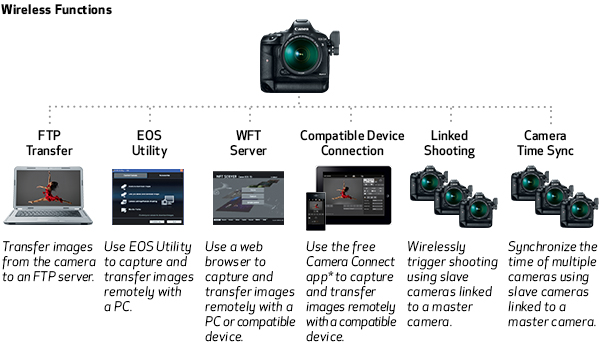Download Wft Pairing Software Canon

Canon has a range of Wireless File Transmitter (WFT) units that can be fitted to many of its professional and semi-professional EOS DSLR cameras. These WFT units provide standard network wired or WiFi connections that allow a camera and remote computer to communicate and transfer images.
Brian Worley gives an overview of the Canon wireless system, network compatibility, and the best use of the communication modes within the Canon system. Each Canon WFT unit features three types of connection modes – WFT server mode, FTP transfer mode and EOS Utility – to suit different requirements for image transfer and remote camera control. Selecting the appropriate mode enables images to be sent continuously from the camera to a remote computer as the photographer shoots, or images can be selected for transfer by the photographer or a remote editor viewing images that are already stored on the camera’s memory cards. In some modes it is possible to remotely control the camera to change shutter speeds, apertures and other settings, including releasing the shutter over the network. Due to the wide variety of network structures and network equipment the set-up of a WiFi transmitter requires knowledge of both the network environment and the EOS DSLR camera system.
Wireless File Transmitters also have a 100Mbit wired network port that can be used instead of the WiFi connection. Wired networks deliver significantly faster data transfer speeds than WiFi networks and are sometimes used for arena sports photography where a set position is assigned. Wired connections are simpler to set-up than wireless ones, but the networking and software set-up processes are very similar. Network and connection options shown on a computer screen in Windows 7. Wireless network terminology There are several key wireless-related terms that are worth knowing: • An Access Point is a hardware unit that provides a WiFi connection to a network system. It is sometimes referred to as a router. • An Internet Protocol (IP) address is a unique sequence of numbers that is used to identify a device on a network.
Download drivers, software, firmware and manuals for your Canon product and get access to online technical support resources and troubleshooting. We use cookies to provide you with the best possible experience in your interactions with Canon and on our website – find out more about our use of Cookies and change your cookie settings here.
IP addresses are written as a set of four numbers with a period between each. Examples of IP addresses are 192.168.1.2 or 10.10.10.200 • The Service Set Identifier (SSID) is often called ‘the network name’ and is used to identify the WiFi network that’s being used for communication. Art cam free download. • Domain Name Server (DNS): in networks connected to the internet the DNS enables the use of names to identify ftp servers, for example ftp.canon-europe.com instead of 192.168.1.2.

The Domain Name Server maintains a cross reference of names and IP addresses. • Gateway – the network gateway is the unit that provides a connection route to networks outside of the directly connected devices. A Gateway is often used to provide access to the internet. WiFi network types There are two types of WiFi network that Canon’s WFT units can use. Ontrack easy recovery professional 100 56 crack serial key. Camera LCD screen showing the detected wireless Ad Hoc and Infrastructure (Infrastr.) wireless networks.